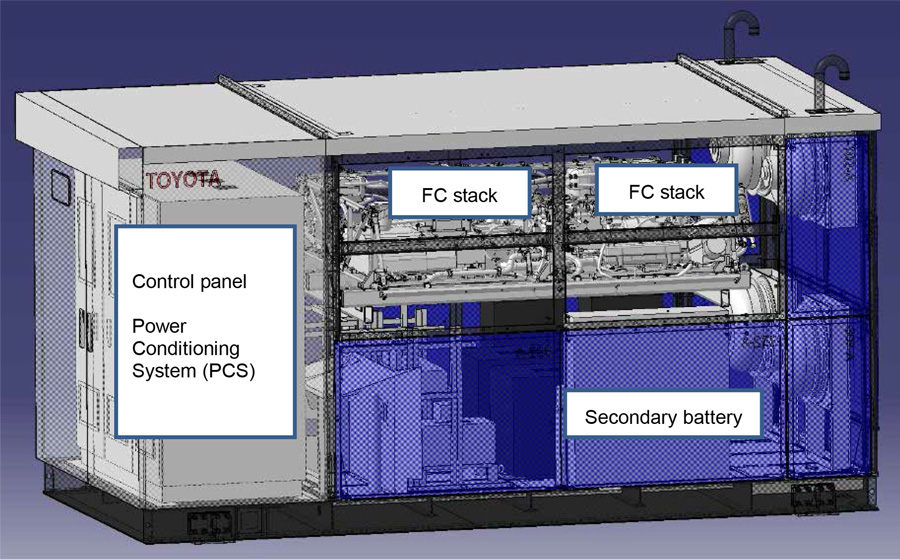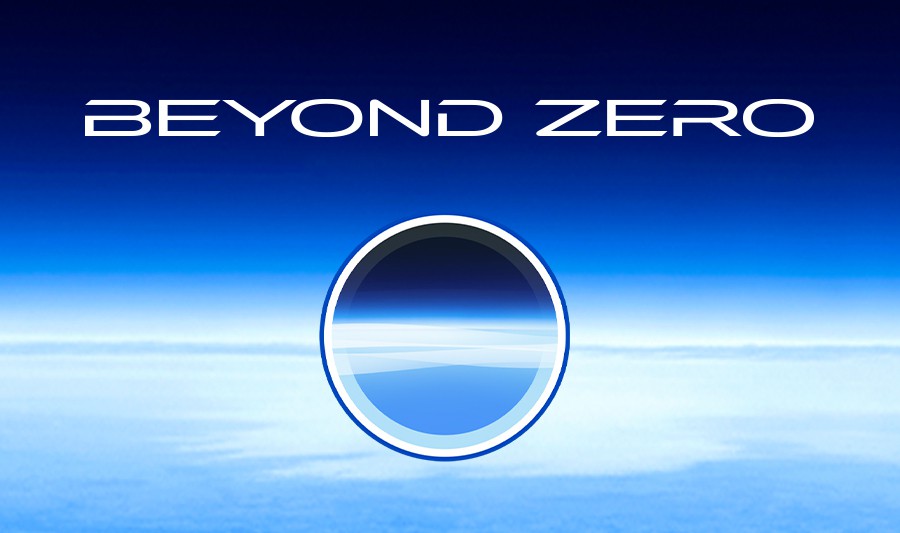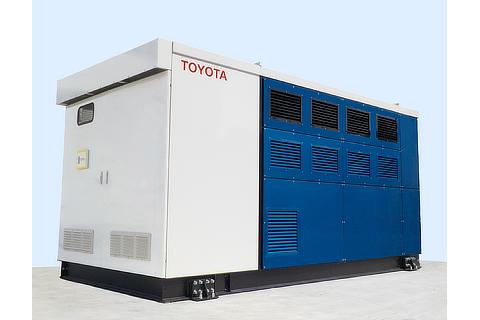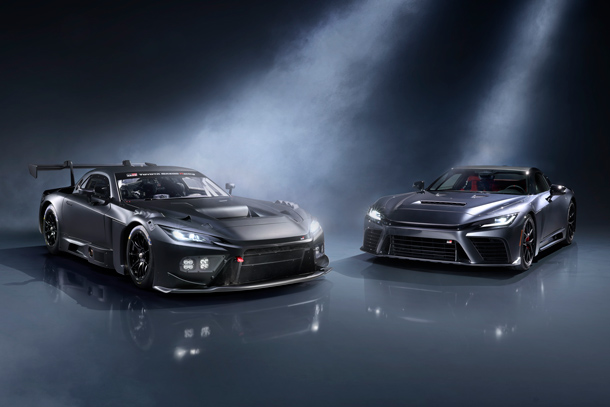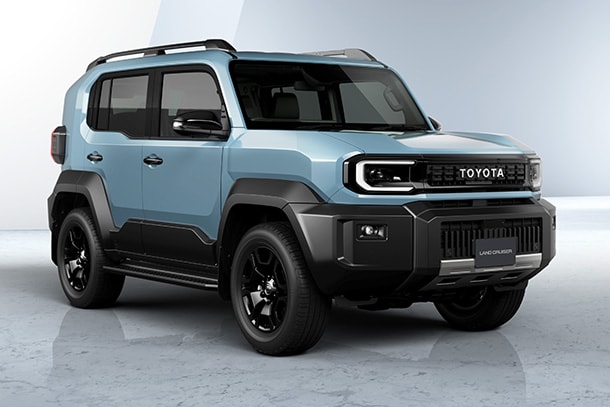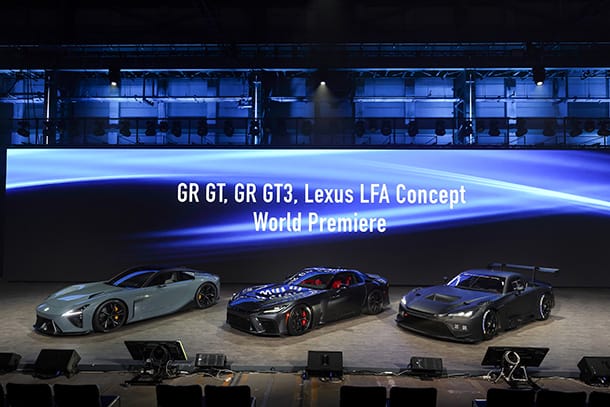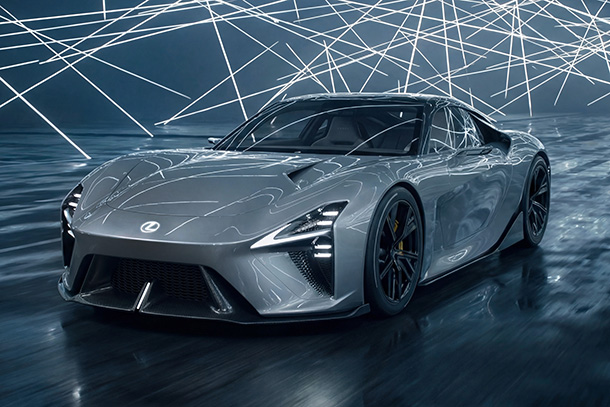Sep. 18, 2019
Toyota Installs Stationary Fuel Cell Generator Based on the Mirai FC System at its Honsha Plant in JapanVerification tests begin, with the aim of verifying the generator's applicability in offices, plants, and other commercial scenarios
Toyota City, Japan, September 18, 2019―Toyota Motor Corporation (Toyota) announces it has developed a stationary fuel cell generator (FC generator) that makes use of the fuel cell system (FC system) equipped in the Mirai Fuel Cell Electric Vehicle (FCEV). The FC generator has been installed within the Honsha Plant grounds in Toyota City, Aichi Prefecture, and verification tests have now commenced.
The FC generator uses two each of the FC system components equipped in the Mirai, including its FC stack, power control unit (PCU), and secondary battery. By using components from the Mirai FC system, Toyota seeks to produce a high-performance generator at a reasonable price. Development on the generator was carried out jointly by Toyota and Toyota Energy Solutions, Inc.
For the verification tests, the electricity generated by the FC generator will be used inside the Honsha Plant; the generator will operate continuously for 24 hours per day, and generate a rated output of 100 kilowatts. The energy efficiency―the amount of electricity it generates per unit of hydrogen―the stability of the generated output, and the durability and ease of maintenance of the generator will be verified and evaluated.
Based on the results of the verification tests, Toyota intends to use FC generators as private power generators in an increasing number of plants. The generators will be fueled by hydrogen emitted both during the production process for FC system components, as well as during evaluation and testing processes; in this way, Toyota intends to develop and implement technologies that make effective use of hydrogen. In 2015, Toyota announced its Toyota Environmental Challenge 2050, one of which was the Plant Zero CO2 Emissions Challenge. In order to fulfil this challenge, Toyota will continue to steadily engage in reducing the amount of CO2 it emits during its production processes.
As part of its efforts to expand use of the FC system it developed for the FCEV, Toyota intends to consider the practical realization of the FC generator. This entails carrying out research and development and discussing the establishment of business models aimed at improving the generator's product appeal, by enhancing its energy efficiency and durability, making it more compact, and reducing costs.
Basic Specifications of FC Generator
-
- Width × Length × Height
- 2.3 × 4.5 × 2.5 m
-
- Main FC systems taken from the Mirai
- FC stack, PCU, secondary battery, air compressor
-
- Rated output
- 100 kW
-
- Power generation efficiency (transmission end)
- Goal of 50% or more
-
- Rated voltage / number of phases / frequency
- AC 210 V / three-phase three-wire / 50/60 Hz
-
- Fuel cell type
- Solid polymer electrolyte
-
- Hydrogen purity
- Pure hydrogen (99.97%)
-
- Start-up time
- 40 seconds (time to reach rated output)
Exterior of FC Generator
System Structure of FC Generator
"Achieving zero, and adding new value beyond it"
As part of efforts to pass our beautiful "Home Planet" to the next generation, Toyota has identified and is helping to solve issues faced by individuals and overall society, which Toyota calls "Achieving Zero," hoping to help reduce the negative impacts caused by these issues to people and the environment to zero. Additionally, Toyota is also looking "Beyond Zero" to create and provide greater value by continuing to diligently seek ways to improve lives and society for the future.
- About Beyond Zero
- https://global.toyota/en/mobility/beyond-zero/

